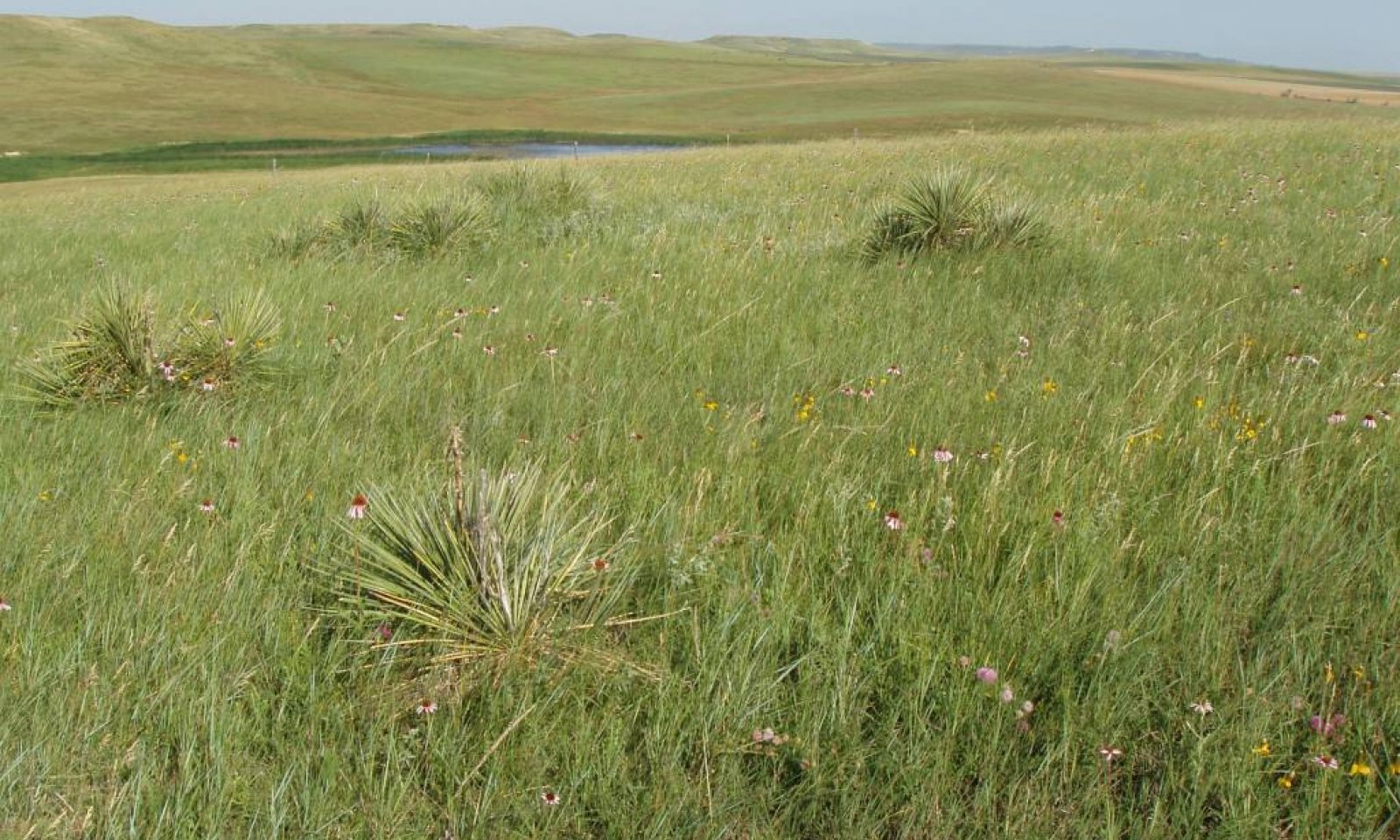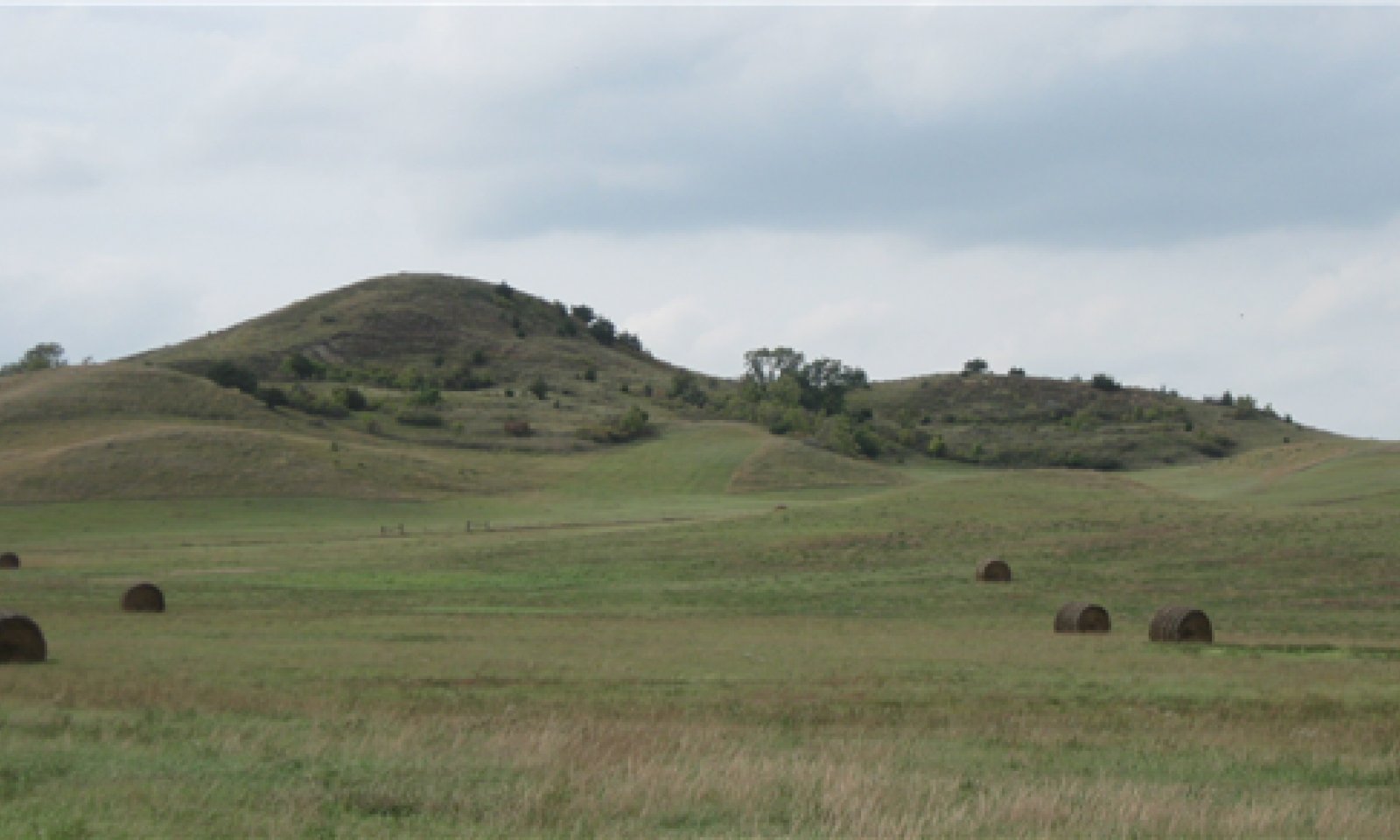
Shallow Clay
Scenario model
Current ecosystem state
Select a state
Management practices/drivers
Select a transition or restoration pathway
- Transition T1A More details
- Transition T1B More details
- Transition T1C More details
- Transition T1D More details
- Transition T2A More details
- Transition T2B More details
- Transition T3A More details
- Transition T3B More details
- Transition T4B More details
- Transition T4A More details
-
No transition or restoration pathway between the selected states has been described
Target ecosystem state
Select a state
Description
This State represents the natural range of variability that dominates the dynamics of this ecological site. This State is codominant by cool- and warm-season grasses. In pre-European times, the primary disturbance mechanisms for this site in the reference condition included frequent fire and grazing by large herding ungulates. Timing of fires and grazing coupled with weather events dictated the dynamics that occurred within the natural range of variability. Today, this State can be found on areas that are properly managed with grazing and/or prescribed burning, and sometimes on areas receiving occasional short periods of rest. The dominant cool- and warm-season species can decline and a corresponding increase in short statured species will occur with continuous seasonal grazing.
Submodel
Description
This State is dominated by warm-season shortgrass species and upland sedges. It is the result of grazing practices that remove the mid-statured cool- and warm-season grasses, and provide a competitive advantage to shortgrasses and grass-like species that are grazing-resistant. Water infiltration has decreased and runoff has increased in this State. This State is very resilient and resistant to change through grazing management alone. Because of the prevalence of non-native cool-season grasses in this MLRA, a restoration pathway back to the Reference State (1.0) is unlikely.
Submodel
State 3
Wooded State




Description
This State consists of areas where trees have become established or have encroached onto the site. There are at least two distinct plant communities in this State. One is the establishment of deciduous trees and shrubs in swales and/or areas where soil slumping has occurred. The second plant community is the establishment and expansion of eastern redcedar and/or Rocky Mountain juniper. The latter plant community can develop into a closed canopy that impedes the reproductive capability of the major native perennial grass species. In either case, the increase in tree canopy is a result of a disruption of the natural, and human related fire regimes that occurred prior to European settlement, which kept trees at an immature stage.
Submodel
Description
This State has been invaded by smooth brome and/or Kentucky bluegrass but not at the levels where the plant community is dominated by these species. This State is ‘At Risk’ of transitioning to the Invaded State (5.0) which is dominated by smooth brome and/or Kentucky bluegrass. Prescribed burning and/or chemical herbicides, along with targeted grazing, can be used to reduce the amount of smooth brome and Kentucky bluegrass in the plant community, but it will not be completely removed. At this point a restoration pathway to the Reference State (1.0) does not exist.
Submodel
Description
This State is the result of invasion and dominance of introduced species. This State is characterized by the dominance of smooth brome and/or Kentucky bluegrass, and an increasing thatch layer that effectively blocks introduction of other plants into the system. Plant litter accumulation tends to favor the more shade-tolerant, introduced grass species. The nutrient cycle is also impaired, and the result is typically a higher level of nitrogen, which also favors the introduced species. Increased plant litter decreases the amount of sunlight reaching plant crowns, thereby shifting competitive advantage to shade-tolerant, introduced grass species. Studies indicate that soil biological activity is altered, and this shift apparently exploits the soil microclimate and encourages growth of the introduced grass species. Once the threshold is crossed, a change in grazing management alone cannot cause a reduction in the invasive grass dominance. Preliminary studies would tend to indicate this threshold may exist when Kentucky bluegrass exceeds 30 percent of the plant community and native grasses represent less than 40 percent of the plant community composition. Plant communities dominated by Kentucky bluegrass have significantly less cover and diversity of native grasses and forb species (Toledo, D. et al., 2014). Smooth brome is assumed to follow a similar ecological threshold, but that is not documented scientifically.
Submodel
Mechanism
Heavy, continuous seasonal grazing (stocking levels well above carrying capacity for extended portions of the growing season, and at the same time of year each year, typically beginning early in the season) or heavy, continuous season-long grazing will convert this plant community to the Shortgrass Sod State (2.0).
Mechanism
A diverse hardwood tree and shrub plant community (3.1) can develop with an increase in hydrology, typically occurring on north- and east- facing slopes, causing the soils to slump or slide. This disturbance provides the opportunity for hardwood trees to establish in the absence of fire.
Mechanism
No fire for extended periods of time and the encroachment of juniper species will lead the Reference State (1.0) across a threshold to a Juniper Plant Community (3.2). This is a result of a disruption of the natural and human related fire regimes that occurred prior to European settlement. This transition can occur in combination with heavy grazing, long-term light grazing, or no grazing.
Mechanism
Invasion of non-native cool-season grasses, no use and no fire for extended periods of time (typically for 10 or more years), or long-term light grazing will likely lead this State over a threshold. This will result in transition to the Native/Invaded State (4.0), which can contain up to 15 percent non-native cool-season grasses in the plant community.
Mechanism
Non-use or long-term light grazing and invasion of non-native cool-season grasses will transition the Shortgrass Sod State (2.0) to the Native/Invaded State (4.0).
Mechanism
Invasion of non-native cool-season grasses, in combination with heavy, continuous seasonal grazing (stocking levels well above carrying capacity for extended portions of the growing season, and at the same time of year each year, typically beginning early in the season) or heavy, continuous season-long grazing, or frequent and severe defoliation will convert this plant community to the Invaded State (5.0).
Mechanism
Invasion of non-native, cool-season grasses, fire, prescribed burning, or brush management, in conjunction with long-term prescribed grazing may lead this plant community across a threshold to the Native/Invaded State (1.0). This would have to take place before the trees reach maturity and are still susceptible to fire and reproductive propagules of the perennial grasses are still present.
Mechanism
Wildfire intense enough to kill mature trees, and the invasion of non-native cool-season grasses, will cause this plant community to cross a threshold and lead to the Invaded State (5.0) and specifically to the Annual-Pioneer Perennial/Bare Ground Plant Community (5.2).
Mechanism
A diverse hardwood tree and shrub plant community (3.1) can develop with an increase in hydrology, typically occurring on north- and east-facing slopes, causing the soils to slump or slide. This disturbance provides the opportunity for hardwood trees to establish in the absence of fire.
Another possibility is caused by no fire for extended periods of time and the encroachment of juniper species. This will lead the Native/Invaded State (4.0) across a threshold to a Juniper Plant Community (3.2). This is a result of a disruption of the natural, and human related fire regimes, which occurred prior to European settlement, allowing juniper to establish and persist on the site.
Mechanism
Heavy, continuous seasonal grazing, or no use and no fire, or long-term light grazing will cause a transition from this State to the Invaded State (5.0). The ecological threshold can be identified by the percentage of non-native cool-season species in the Plant Community. Preliminary studies would tend to indicate this threshold may exist when Kentucky bluegrass exceeds 30 percent of the plant community and native grasses represent less than 40 percent of the plant community composition (Toledo, D. et al., 2014). Smooth brome is assumed to follow a similar ecological threshold, but that is not documented scientifically.
Model keys
Briefcase
Add ecological sites and Major Land Resource Areas to your briefcase by clicking on the briefcase (![]() ) icon wherever it occurs. Drag and drop items to reorder. Cookies are used to store briefcase items between browsing sessions. Because of this, the number of items that can be added to your briefcase is limited, and briefcase items added on one device and browser cannot be accessed from another device or browser. Users who do not wish to place cookies on their devices should not use the briefcase tool. Briefcase cookies serve no other purpose than described here and are deleted whenever browsing history is cleared.
) icon wherever it occurs. Drag and drop items to reorder. Cookies are used to store briefcase items between browsing sessions. Because of this, the number of items that can be added to your briefcase is limited, and briefcase items added on one device and browser cannot be accessed from another device or browser. Users who do not wish to place cookies on their devices should not use the briefcase tool. Briefcase cookies serve no other purpose than described here and are deleted whenever browsing history is cleared.
Ecological sites
Major Land Resource Areas
The Ecosystem Dynamics Interpretive Tool is an information system framework developed by the USDA-ARS Jornada Experimental Range, USDA Natural Resources Conservation Service, and New Mexico State University.



